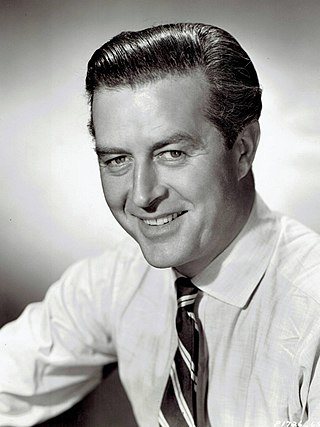
Ray Milland was a Welsh-American actor and film director. He is often remembered for his portrayal of an alcoholic writer in Billy Wilder's The Lost Weekend (1945), which won him Best Actor at Cannes, a Golden Globe Award, and ultimately an Academy Award—the first such accolades for any Welsh actor.

Ginger Rogers was an American actress, dancer and singer during the Golden Age of Hollywood. She won an Academy Award for Best Actress for her starring role in Kitty Foyle (1940), and performed during the 1930s in RKO's musical films with Fred Astaire. Her career continued on stage, radio and television throughout much of the 20th century.
The year 1944 in film involved some significant events, including the wholesome, award-winning Going My Way plus popular murder mysteries such as Double Indemnity, Gaslight and Laura.
The year 1938 in film involved some significant events.

42nd Street is a 1933 American pre-Code musical film directed by Lloyd Bacon, with songs by Harry Warren (music) and Al Dubin (lyrics). The film's numbers were staged and choreographed by Busby Berkeley. It starred an ensemble cast of Warner Baxter, Bebe Daniels, George Brent, Ruby Keeler, Dick Powell, and Ginger Rogers.

Iris Adrian Hostetter was an American stage and film actress.

Lady in the Dark is a musical with music by Kurt Weill, lyrics by Ira Gershwin and book and direction by Moss Hart. It was produced by Sam Harris. The protagonist, Liza Elliott, is the unhappy editor of a fashion magazine who is undergoing psychoanalysis. The musical ran on Broadway in 1941, and in the United Kingdom in 1981. A film version was released in 1944, and a live television special followed in 1954.

The Big Clock is a 1948 American thriller directed by John Farrow and adapted by novelist-screenwriter Jonathan Latimer from the 1946 novel of the same title by Kenneth Fearing.
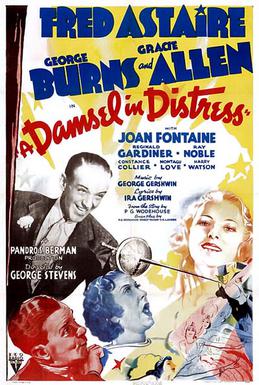
A Damsel in Distress is a 1937 American English-themed Hollywood musical comedy film starring Fred Astaire, George Burns, Gracie Allen and Joan Fontaine. Loosely based upon P.G. Wodehouse's 1919 novel of the same name, and the 1928 stage play written by Wodehouse and Ian Hay, it has music and lyrics by George and Ira Gershwin, and was directed by George Stevens, the second Astaire musical directed by Stevens; the first was Swing Time.
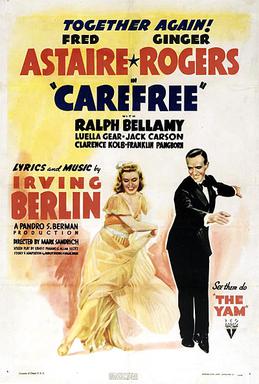
Carefree is a 1938 American musical comedy film directed by Mark Sandrich and starring Fred Astaire, Ginger Rogers and Ralph Bellamy. With a plot similar to screwball comedies of the period, Carefree is the shortest of the Astaire-Rogers films, featuring only four musical numbers. Carefree is often remembered as the film in which Astaire and Rogers shared a long on-screen kiss at the conclusion of their dance to "I Used to Be Color Blind," all previous kisses having been either quick pecks or simply implied.
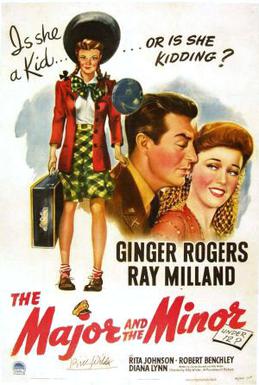
The Major and the Minor is a 1942 American romantic comedy film starring Ginger Rogers and Ray Milland. It was the first American film directed by Billy Wilder. The screenplay credited to Wilder and Charles Brackett is "suggested by" the 1923 play Connie Goes Home by Edward Childs Carpenter, based on the 1921 Saturday Evening Post story "Sunny Goes Home" by Fannie Kilbourne.

Mark Sandrich was an American film director, writer, and producer.

Of Human Bondage is a 1946 American drama film directed by Edmund Goulding and starring Paul Henreid, Eleanor Parker and Alexis Smith. The second screen adaptation of W. Somerset Maugham's 1915 novel, this Warner Bros. sanitized version was written by Catherine Turney. The central characters are Philip Carey, a clubfooted medical student, and Mildred Rogers, a low-class waitress with whom he becomes obsessed.
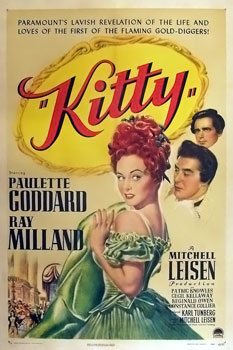
Kitty is a 1945 film, a costume drama set in London during the 1780s, directed by Mitchell Leisen, based on the novel of the same name by Rosamond Marshall, with a screenplay by Karl Tunberg. It stars Paulette Goddard, Ray Milland, Constance Collier, Patric Knowles, Reginald Owen, and Cecil Kellaway as the English painter Thomas Gainsborough. In a broad interpretation of George Bernard Shaw's Pygmalion, the film tells the rags-to-riches story of a beautiful young cockney guttersnipe who is given a complete makeover by an impoverished aristocrat (Milland) and his aunt (Collier) in hopes of arranging her marriage to a peer, thereby repairing their fortunes and their social status.
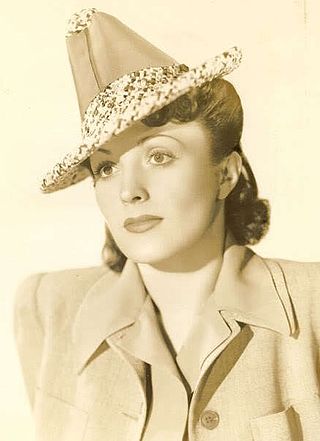
Mary Katherine Linaker was an American actress and screenwriter who appeared in many B movies during the 1930s and 1940s, most notably Kitty Foyle (1940) starring Ginger Rogers. Linaker used her married name, Kate Phillips, as a screenwriter, notably for the cult movie hit The Blob (1958). She is credited with coining the name "The Blob" for the movie, which was originally titled "The Molten Meteor".

The musical short can be traced back to the earliest days of sound films.

In Person is a 1935 American romantic musical comedy film directed by William A. Seiter and starring Ginger Rogers, George Brent and Alan Mowbray.

Quick, Let's Get Married is a 1964 American comedy film directed by William Dieterle and starring Ginger Rogers, Ray Milland and Barbara Eden.

The Ginger Rogers filmography lists the film appearances of American actress Ginger Rogers, as well as her television, stage, and radio credits. Rogers's career spanned fifty-seven years, from 1930 to 1987.

Phyllis Avery was an American actress.

















